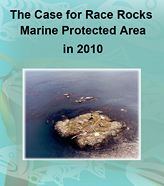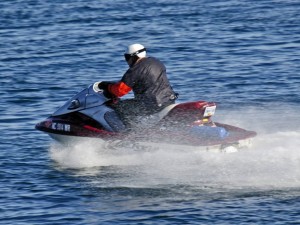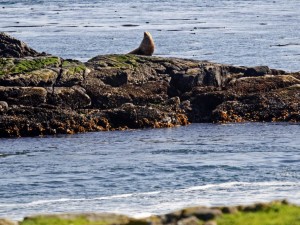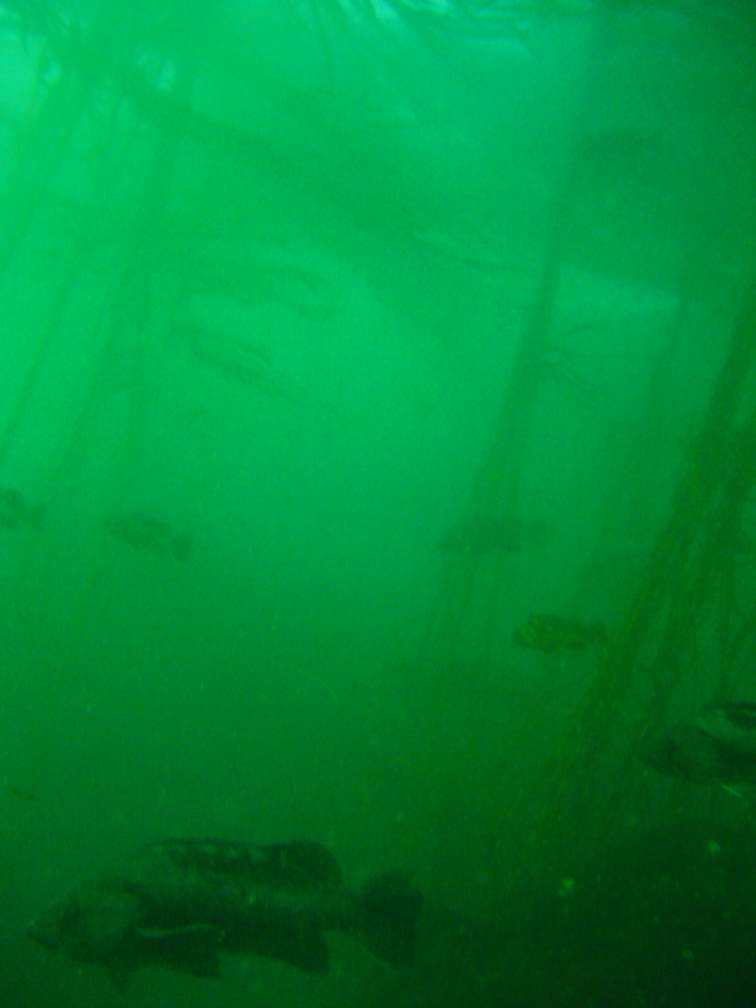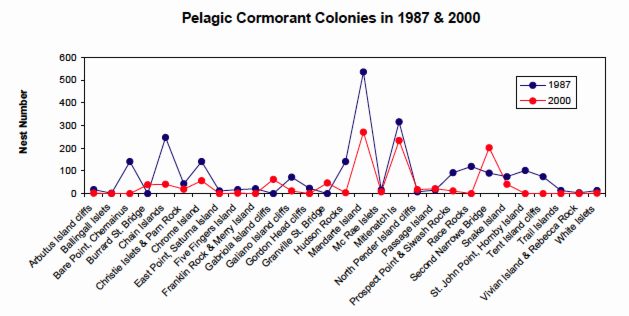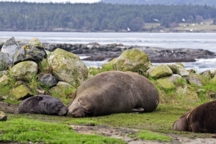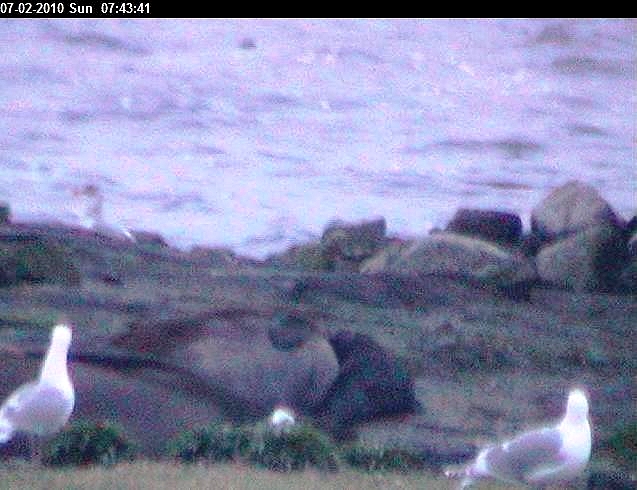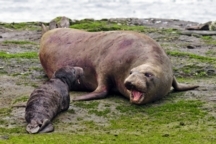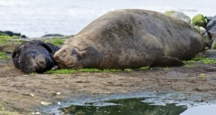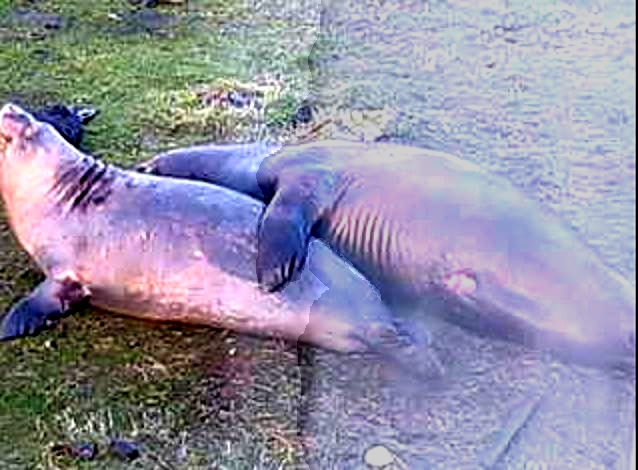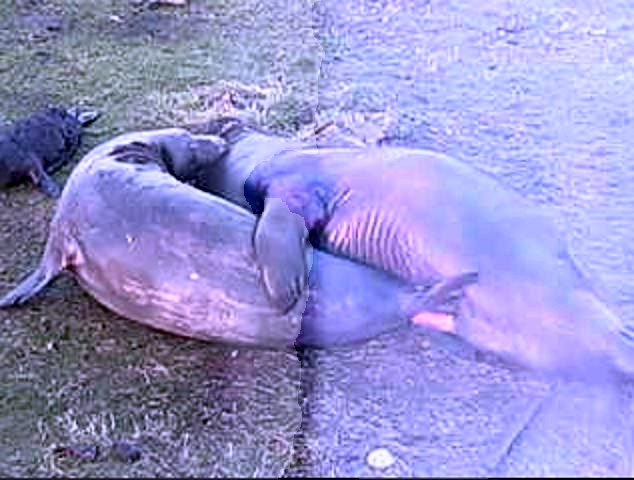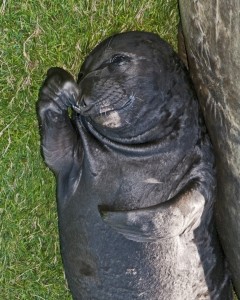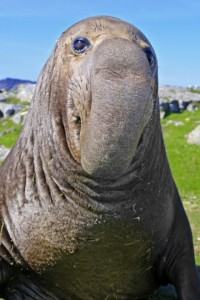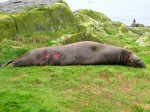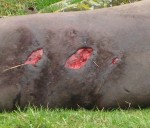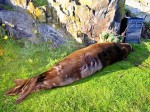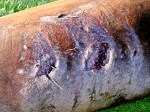This file is designed for the use of the Race Rocks Advisory Board in order to make available in one index, the resources that are most relevant to the Marine Protected Area Designation Process.
Personal Watercraft in the Reserve
Sebastes flavidus: Yellowtail Rockfish–The Race Rocks Taxonomy
Adam took this photo of Erik swimming through a school of Sebastes flavidus, the yellowtail rockfish on July1, 2010. subtidal 10metres at Race Rocks.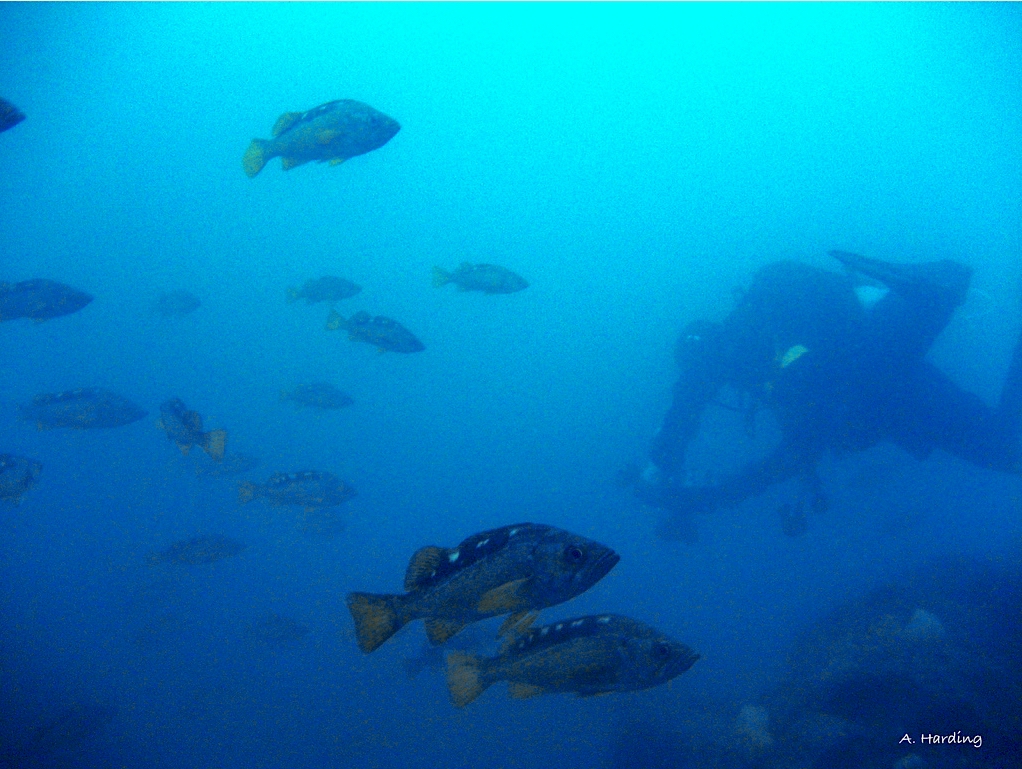
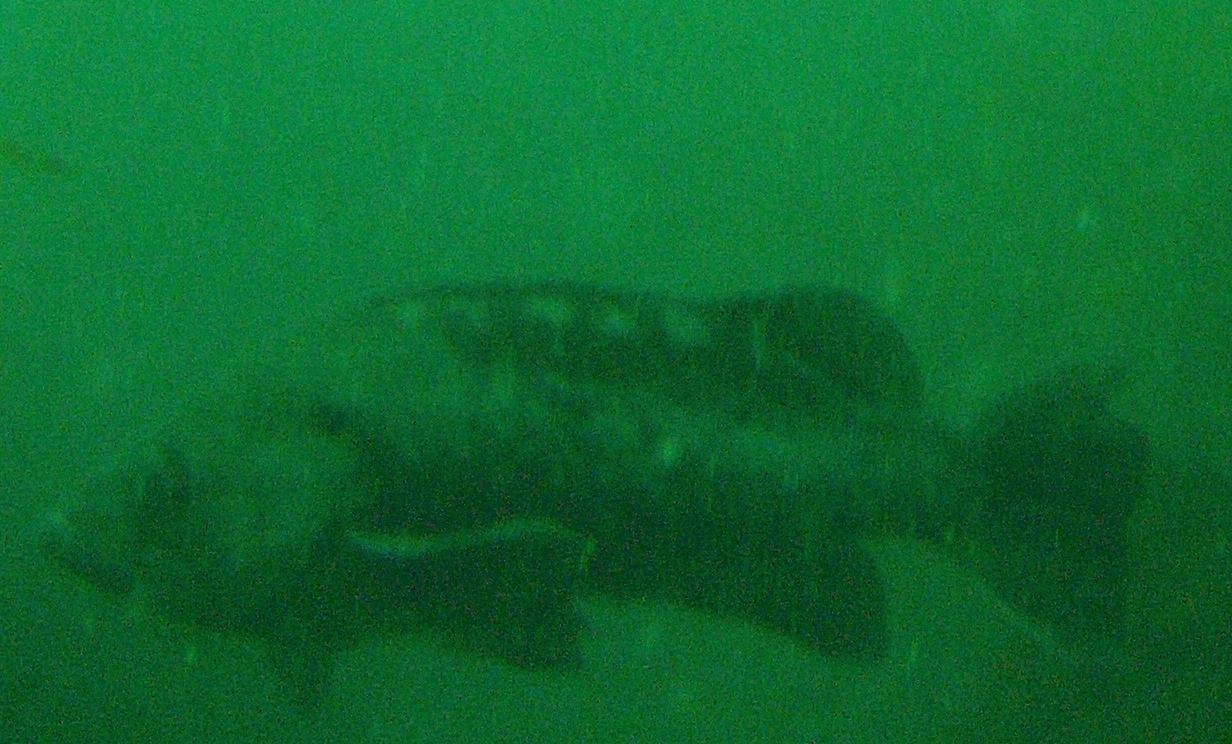
Domain Eukarya
Kingdom Animalia
Phylum Chordata
Sub-Phylum Vertebrata
Class Actinopterygii
Order Scorpaeniformes
Family Scorpaenidae
Genus Sebastes
Species flavidus
Common Name: Yellowtail rockfish
MArch 2010
| Other Members of the Phylum Chordata at Race Rocks |
and Image File |
 The Race Rocks taxonomy is a collaborative venture originally started with the Biology and Environmental Systems students of Lester Pearson College UWC. It now also has contributions added by Faculty, Staff, Volunteers and Observers on the remote control webcams. The Race Rocks taxonomy is a collaborative venture originally started with the Biology and Environmental Systems students of Lester Pearson College UWC. It now also has contributions added by Faculty, Staff, Volunteers and Observers on the remote control webcams.
Adam Harding (PC). |
Seawater Temperature and Salinity February, 2010
Submission on daily seawater temperature and salinity as it is provided to IOS from the daily sampling by the Ecoguardians at Race Rocks.
See the PDF file: Dec2010 February
| 6 | Daily Seawater Temperature and Density Record Shore Station | ||||||||||
| 8 |
|
Time Zone P.S.T | |||||||||
| 9 | |||||||||||
| 10 | Observer: Lester B. Pearson College of the Pacific | MONTH: | February | YEAR: | 2010 | ||||||
| 11 | |||||||||||
| 12 | Date | Time | Sea | Jar | Hydro- meter No. | Observer | Density (1.02–) Reduced | *Corrected | *Salinity | ||
| Temp. | Temp. | ||||||||||
| °C | °C | ||||||||||
| 13 | 1 | 14:54 | 8.5 | 8.2 | 10,802 | 1.0239 | 1.0228 | 1 | |||
| 14 | 2 | 16:01 | 8.5 | 8.5 | 10,802 | 1.0237 | 1.0227 | 1 | |||
| 15 | 3 | 17:10 | 8.5 | 8.3 | 10,802 | 1.0241 | 1.023 | 1 | |||
| 16 | 4 | 6:03 | 8.5 | 8.2 | 10,802 | 1.024 | 1.0229 | 1 | |||
| 17 | 5 | 6:00 | 8.5 | 8.2 | 10,802 | 1.0239 | 1.0228 | 1 | |||
| 18 | 6 | 6:28 | 8.5 | 8.4 | 10,802 | 1.0241 | 1.023 | 1 | |||
| 19 | 7 | 6:40 | 8.5 | 8.5 | 10,802 | 1.0238 | 1.0228 | 1 | |||
| 20 | 8 | 6:45 | 8.5 | 8.2 | 10,802 | 1.0239 | 1.0228 | 1 | |||
| 21 | 9 | 7:30 | 8.5 | 8.1 | 10,802 | 1.0236 | 1.0225 | 1 | |||
| 22 | 10 | 8:08 | 8.5 | 8.2 | 10,802 | 1.0238 | 1.0227 | 1 | |||
| 23 | 11 | 10:15 | 8.5 | 8.3 | 10,802 | 1.0238 | 1.0227 | 1 | |||
| 24 | 12 | 10:00 | 8.5 | 8.3 | 10,802 | 1.0237 | 1.0226 | 1 | |||
| 25 | 13 | 12:09 | 8.5 | 8.4 | 10,802 | 1.0238 | 1.0227 | 1 | |||
| 26 | 14 | 13:01 | 8.5 | 8.6 | 10,802 | 1.0238 | 1.0228 | 1 | |||
| 27 | 15 | 14:04 | 8.5 | 8.5 | 10,802 | 1.0237 | 1.0227 | 1 | |||
| 28 | 16 | 15:01 | 8.5 | 8.6 | 10,802 | 1.0238 | 1.0228 | 1 | |||
| 29 | 17 | 15:47 | 9 | 8.6 | 10,802 | 1.0238 | 1.0228 | 1 | |||
| 30 | 18 | 16:31 | 9 | 8.7 | 10,802 | 1.0239 | 1.0229 | 1 | |||
| 31 | 19 | 5:00 | 8.5 | 8.6 | 10,802 | 1.0237 | 1.0227 | 1 | |||
| 32 | 20 | 5:02 | 9 | 8.7 | 10,802 | 1.0238 | 1.0228 | 1 | |||
| 33 | 21 | 5:12 | 9.5 | 8.1 | 10,802 | 1.0238 | 1.0227 | 1 | |||
| 34 | 22 | 5:25 | 8.1 | 8 | 10,802 | 1.0239 | 1.0228 | 1 | |||
| 35 | 23 | 6:06 | 8.5 | 8 | 10,802 | 1.024 | 1.0229 | 1 | |||
| 36 | 24 | 6:15 | 8.6 | 8.2 | 10,802 | 1.0236 | 1.0226 | 1 | |||
| 37 | 25 | 8:00 | 9 | 8.5 | 10,802 | 1.0238 | 1.0227 | 1 | |||
| 38 | 26 | 9:20 | 9 | 8.6 | 10,802 | 1.0237 | 1.0226 | 1 | |||
| 39 | 27 | 11:30 | 9 | 8.9 | 10,802 | 1.0238 | 1.0227 | 1 | |||
| 40 | 28 | 13:00 | 10 | 9.4 | 10,802 | 1.0238 | 1.0228 | 1 | |||
| 41 | |||||||||||
| 44 | Mean* | * | 8.7 | 8.4 | 1.0238 | 1.0228 | 1.0 * | * | |||
| 45 | |||||||||||
| 46 | * These calculations will be done later at D.F.O. office. | ||||||||||
| Recorded by Race Rocks Marine Protected Area Guardian Ryan Murphy | |||||||||||
| Lester B. Pearson College of the Pacific | |||||||||||
Phalacrocorax pelagicus: Review of Research on Nesting and Populations
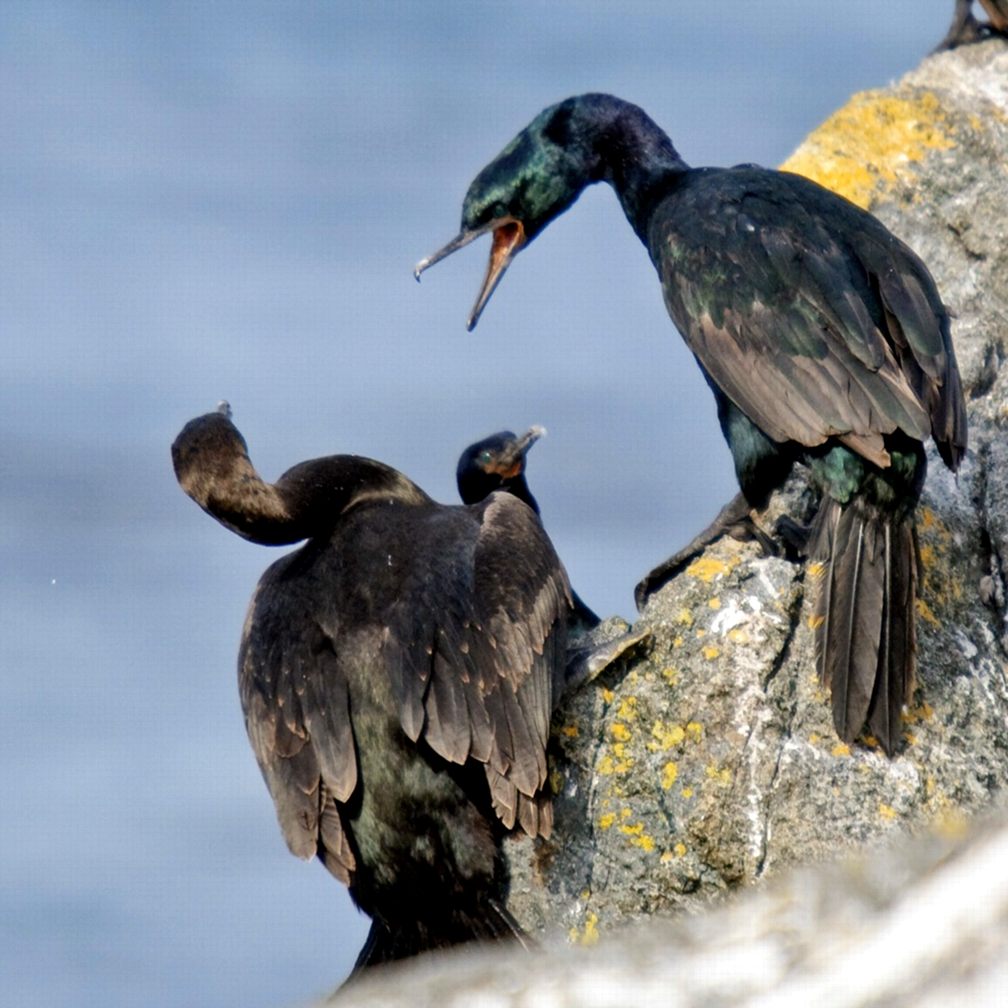 We have seen a marked decline in nesting of one of the four species of seabirds which has nested traditionally at Race Rocks, Pelagic Cormorants (Phalacrocorax pelagicus). By 2007, the nesting population had been reduced to one or two nests, and from 2008 to the last season (2009 ) there were no nests at all. This population crash has been common across the Gulf Islands., and the lower end of Vancouver Island and Strait of Juan de Fuca. According to the Canadian Wildlife Service, the population of this species is estimated to be at 9000 individuals, and the pelagicus subspecies is red-listed by BC – other subspecies are stable.
We have seen a marked decline in nesting of one of the four species of seabirds which has nested traditionally at Race Rocks, Pelagic Cormorants (Phalacrocorax pelagicus). By 2007, the nesting population had been reduced to one or two nests, and from 2008 to the last season (2009 ) there were no nests at all. This population crash has been common across the Gulf Islands., and the lower end of Vancouver Island and Strait of Juan de Fuca. According to the Canadian Wildlife Service, the population of this species is estimated to be at 9000 individuals, and the pelagicus subspecies is red-listed by BC – other subspecies are stable.
In this file, I have summarized the results of several papers on research on Cormorant populations in the southern Gulf Islands and Georgia Strait. Vermeer and Rankin, 1984, did their research when the populations were on the incline, however since the 1900s, this trend has not persisted as has been reflected in the paper by Chatwin et al. The summary of their paper and the possible reasons for decline are listed near the end of this review.
The British Columbia Coastal Waterbird Survey by Badzinski et al, 2005 indicated a possible upturn in the population trend in BC.
See images of Pelagic Cormorants on Ryan Murphy’s Flickr site
The Christmas bird count records from Race Rocks reflect some of the low population numbers at that time of year, but do show an increase in the last two years, so we hope this may signify a turn in the welfare of this species. It will be interesting to track whether or not this species returns to nesting.
Population Trends in Nesting Double-Crested and Pelagic Cormorants in Canada
|
Double-crested and Pelagic Cormorant Inventory in the Strait of Georgia in 2000
|
The authors express their concern for the decline in recent years with the following summation:
|
The reasons for the decline were summarized in the paper as follows:
|
| British Columbia Coastal Waterbird Survey An Evaluation of Survey Power and Species Trends after Five Years of Monitoring March 2005http://www.bsc-eoc.org/download/BCCWS%205-YR%20Report.pdf
Authors: Shannon S. Badzinski 1, Richard J. Cannings 2, Tasha Smith 2, & Jason Komaromi 3
|
| Also from the website of the Canadain WildlifeService, Information is presented on the decline of seabirds along the Pacific Coast of Canada. So we will continue to update our population observations of this species .Garry Fletcher, February, 2010 |
DFO expenses from Access to Information Request
CONTENTS of this File:
1. Background and Rationale for this report .
3. Table 1: Yearly budgets, 1999-2010
4. Figure 2: Detailed overview of DFO expenditures on Race Rocks
5. Table 2: Detailed overview table, 1999-2010
6. Figure 3. Pie chart showing expenditures for five categories.
7. Table 3. List of Individual Expenses for the Race Rocks MPA 1999-2010
8. Example of Ecotourism report done for First Nations :2006
(668 KB.pdf file)
9. ATIP Report : A200900266_2010-02-09_09-00-22.pdf (6MB.pdf file)
11. Condensed version with headers removed, showing graphs.
ANALYSIS AND DISCUSSION:
Upon receiving this report, I was surprized to note several features:
1. The fact that there was a significant budget for the creation of the Race Rocks MPA almost every year from 1999 to 2010, when the RRAB (Race Rocks MPA Advisory Board ) had been effectively shut down in 2002.
2. The fact that in many years a significant portion of the budget remained unspent at the end of the DFO fiscal year when the process of management of this ecosystem and designate MPA was still being carried on by Lester Pearson College without any financial support from DFO.
3. The large portion of the cumulative budget over the 11 years that was designated for First Nations Liaison and continues to be designated, so far without any evidence of an outcome. ( process still ongoing as of Sept, 2011–)
4. The unavailability of written records showing the deliverables for most of the contracts.. hopefully in the interests of transparency and resource availability they are still to come from DFO.
5. When I made a request for the #8 report above: 2006 report on ecotourism, there was some concern about confidentiality expressed by DFO and then the pdf file referred to above in number 8 was released by DFO. This report, which it turns out after checking with the author of the document, was originally a generic power point presentation, which was never presented to the First Nations groups by the contractor. The simplicity and lack of quality directed a this specific case, represented by an expenditure of $19,000 is obvious. Furthermore, I consider the language and the content of the report to be patronizing to the First Nations who commissioned it and it only leaves me questioning the lack of oversight represented by this expenditure .
6. A request for further explanation of many of the contracts has been made to DFO and I will update this space if and when information is available.
7. The analysis for The Bowie Seamount MPA has so far not been done, but I plan on doing it as well as time allows in order to have comparative figures available.
8. One of the requests in my ATIP that they were not able to accommodate was for similar figures for the creation phase as well as the operation phase for the other MPAs in Canada, the majority of which are on the East Coast. I urge the DFO to make this available or if necessary other individuals to go through the ATIP process in order to retrieve this information and make it public.
9. I was struck by the fact that during the course of 11 years, not one cent was devoted by DFO to doing on the ground scientific research that could meet the GAPS in scientific knowledge that I identified early in the Pilot MPA process in April 1999 at the Race Rocks Ecological Overview Workshop . Furthermore, no funds were ever forthcoming for the ongoing operation of the designate MPA. ( Refer to year 2001 proposal )
10. As per a comment recently of one member of the current Advisory Board, “If DFO really is serious about public advice from an MPA Advisory Boards, It should make all information like this freely and easily available to the Board members.”
11. I would like to thank the individuals in the DFO Access to Information and Privacy office for their advice and cooperation during the process involved in this ATIP request.
On March 17, 2010, I sent an e-mail to our RRPAB representative from of the Oceans Habitat and Enhancement Division of Fisheries and Oceans Canada in Nanaimo. He had agreed by phone to help clarify some of the specific questions I had about some of the items in the list of expenditures. Below are the results of that query, with his responses in green.
Response April1, 2110
Based on discussion with my manager and our ATIP staff, I suggest that you submit your request for records outlined below through ATIP. In reviewing the records you’re requesting, I note that many of them are not in my own files. Further, going through ATIP provides greater certainty that the records you receive have taken into consideration confidentiality concerns.
I did quickly go through your list below with some responses that you may find useful in posing specific questions to ATIP. To the extent you can keep your questions specific, it would certainly help reduce the search time estimates. Also keep in mind though, that I have files from past staff in boxes. Though they’re labelled to some extent, if I receive an ATIP for files and I know those past staff have had some involvement in the programs relevant to the records, I’m obliged to include in my search estimates the time to go through the boxes that could potentially have relevant records. As mentioned below in a number of spots, I’m not familiar with some. By that, I largely mean that your description didn’t ‘ring a bell’ with me which would suggest that I won’t have the financial records associated in my own files.
1. I mentioned I am missing the March 31 2008 end of year report of expenditures which may have been lumped in with the Endeavour project number.
As mentioned in my email, fiscal year 2008/09 activities included only First Nations liaison work through Aaron Reith and the Socio-economic overview and analysis report (contract carried out by Sunderman). As I understand, those records were provided to you, but may have had a date of 2009.
2. Also although Lisa sent me the Endeavour /Race Rocks end of year summary for March 2009, It is difficult to separate RR from Endeavour in that one.. Is there any further clarification such as Total Line Object figures which may help me to pick out the Race Rocks specific expenditures.
As mentioned above, March 2009 relates to fiscal year 2008/09 and I’ve listed the items related to that year.
3. I have come across another report that I am unsure about:
Feb 20/01 M.Pakenham Conference Fees? $340.16
I believe he delivered a presentation to this conference as at least I have seen reference to it in a googled file , however it may be useful to have the whole presentation ( presumably a power point in pdf ) if it is still available.
I do not have this presentation. I would not be confident that it could be readily located. A conference presentation may also have limited utility. That is, I don’t know whether Marc would have written and followed speakers notes written in the presentation. It sounds like you’ve googled the conference, I would suggest the proceedings of the conference would potentially be at least as useful to you.
4. Mar30/00 CRD VEHEAP contribution $6000.00. What is VEHEAP ..of the CRD was anything produced as a result of this.
VEHEAP stands for Victoria and Esquimalt Harbours Environmental Action Plan. I don’t have records of this. Further, I would suggest that this was an activity more related to our Integrated Management Programs rather than Race Rocks.
5. Was a report made available from this: Jan29/02 Env.consult , Environment/Environnment 0500 726000008186 $10,000.00
I’m not familiar with this.
6. Is there documentation or report on this one? Apr9 Apr/02 sci/env consult Luanne Chew Consulting Services for Completion of MPA Design Reports.
$5000.00
I’m not familiar with this.
7. When it says ” as per attached statement of work” are those statements available and can they be made public.
as in
——–June 30/09-July13/09-Aaron Reith&Co Community Liaison for First Nations with Respect to the designation process for the Race Rocks Marine Protected area. See the attached statement of work
——Feb 05/04 –To suport the engagement of Select Douglas Treaty First Nations as per attached statement of work. $15,000.00
——and 17 Aug,18 July 2004 –Songhees First Nation Support the ongoing negotiations of select Douglas Treaty First Nations in SVI in Broad Discussions related to Marine Aquatic Resources /To support neg. with Fed and Prov. Gov’ts of a framework for the cooperative mgt. as per statement of work $25,000.00
That would be a question best dealt with through filing an ATIP
8. What is meant by protection services in this one? and to whom did it get paid?
Feb08, Jan 09/2005 Security Additional Meeting, Protection Services ( Guardians, Commissionaires, security Guards etc.) $5,000.00
I ‘m not familiar with this.
9. October 99 to December 2000 Axys Environmental Consulting.. Socio-Economic Overview of RR — Is this the same one we have been looking at recently? if not could we get a copy for our resource files.
This is the same as the Sunderman report provided to the RRPAB and referenced below.
10. It also is apparent that the socio-economic study update , I believe done in 2009 Prepared by:Randy Sunderman Peak Solutions Consulting Inc. Kamloops, BC does not seem to be included anywhere in the expenditures up to January 2010, so could you check on that.
I had understood that was provided in the ATIP. Again, you may wish to check the records provided for fiscal year 2008/09.
11. Dec 99-Feb 2000 Gordon Hanson & Associates Consulting…. was there a report produced for this, and if not what was the nature of the contract?
I’m not familiar with this.
12. The Canadian Hydrographic survey (done back in 1999, that used the multi-beam SONAR ) does not seem to be represented as far as I can determine. This is probably because it was done by another part of the department, could you check into whether that cost is available as it would be a relevant science portion.
You are correct, it would have been financially coded in Canadian Hydrographic Services (CHS) coding. It may have been Oceans funded, but there could have been a budget transfer to Science Branch for the CHS expenditure.
Thanks for your attention to this. I hope this is not too many questions to pursue. If you can’t resolve all of them we will have to live with that.
The above comments in the Analysis and Discussion represent the opinion of Garry Fletcher and are not to be interpreted as being the opinions of any other organization or individuals unless indicated otherwise. It is my hope that it can lead to a level of accountability in expenditure by DFO, and transparency to the public about this process.
Garry Fletcher
Victoria, BC
March 25, 2010
(updated April 20, 2010–GF.)
Access to Information Request on DFO expenses 1999-2010
CONTENTS of this File:1. Background and Rationale for this report .
3. Table 1: Yearly budgets, 1999-2010
4. Figure 2: Detailed overview of DFO expenditures on Race Rocks
5. Table 2: Detailed overview table, 1999-2010
6. Figure 3. Pie chart showing expenditures for five categories.
7. Table 3. List of Individual Expenses for the Race Rocks MPA 1999-2010
8. Example of Ecotourism report done for First Nations :2006
(668 kb.pdf file)
9. ATIP Report : A200900266_2010-02-09_09-00-22.pdf (6MB .pdf file)
11. Condensed version with headers removed, showing graphs.
Background and Rationale for this report:
When we started the MPA designation Process for Race Rocks in 1999, I believe we all went into it assuming that the process of community involvement and stewardship would be one that could be a model of how ordinary people could help to achieve ecological conservation. Further to this, they could play a valuable role in assisting governments in creating one regime, devoid of jurisdictional barriers for the management of humans to ensure ecological sustainability of this unique resource. It was also hoped, that there would be unprecedented transparency in the process. At the time there was no reason that it could not become a template for the establishment of a network of Marine Protected Areas.
The Initial MPA Advisory Process involving the Race Rocks Advisory Board ended in 2002 when the consensus of the Board was not accepted by DFO office in Ottawa, and the resulting modified document gazetted was repugnant to RRAB members as well as First Nations. The Master’s Thesis of Sean Leroy provides a good overview of why this process had failed.
Since that time Lester B. Pearson College has continued with the support of the Ecological Reserve at Race Rocks. They had assumed this responsibility in Stewardship of facilities and the Ecological Reserve since the de-staffing of the light station by the Coastguard in 1997. Since that time the College has provided an on site guardian and generated the funds to cover all expenses, striving for energy self sufficiency and a sharing of the resource with creative use of technology on the internet in keeping with the mandate set out in the management plan for the Ecological Reserve. During that time, BC Parks has also cooperated by providing some funding for on-sight infrastructure repair and maintenance.
“If we are to learn from past mistakes in the Process of Creating Marine Protected Areas, then it must be documented transparently so that stakeholders might have
an opportunity to inform themselves.”
In the fall of 2009, DFO reconvened the Race Rocks (Public) Advisory Board. It became clear to many in the first meeting that the community memory was absent, leading to a projected process highly reminiscent of the re-invention of the wheel, aimed to push through the process and seek completion of the MPA by the end of March, 2010. It was to me as if the last 11 years had not existed.
Prior to the November meeting of the Race Rocks Advisory Board (RRAB), I initiated an Access to Information and Privacy request ( ATIP) to DFO which was originally intended to quantify the costs involved in the creation and the follow up costs of administration and operation of the existing Marine Protected areas on all coasts of Canada. One of many points of that ATIP request included the costs of the MPA Creation Process since 1999 for Race Rocks. After many email and telephone communications back and forth with the ATIP office in Ottawa, I agreed to reduce the extent of the request due to costs they were projecting for my complete list: ( 52 hours at $10.00 per hour which was beyond my budget!) Since I was still primarily concerned with being able to compare costs to see whether there was a common approach to MPA designation and operations after designation, I agreed to accept the records for Bowie and Race Rocks. It was made clear to me at the time that I would only get the figures from invoices for expenses which had been tagged with a code designating the project of that reserve.
This means that staff time and DFO internal resource costs were not available. In addition there is no accounting of the costs incurred by Lester Pearson College, outside researchers and volunteers with no support from DFO for research and the protection of the reserve during the interim while apparently ongoing negotiations by DFO had continued.
Knowing that ATIP requests usually take a long time, I assumed we would be having another meeting before I received the ATIP file. In the November RRAB meeting, I asked to include in the agenda of the next meeting a discussion of the costs of the MPA Process for Race Rocks . I was not given assurance at that time that it would be discussed and a further attempt by telephone to get it on the agenda also failed with an indication that it was not in the interests of the Advisory Board. By the time of the March meeting I had had time to do an analysis of the data and asked if I could present this report to the Board. Time was not made available to do that in the meeting so a group of a dozen Board members were able to stay after the meeting for the presentation and follow-up discussion.
The ATIP file of data had been sent to me on February 10, 2010. That document included all financial reports contained in DFO Pacific’s electronic financial reporting system (MRS) under the project code numbers for the Race Rocks MPA designation process (54257 and 93818) and the Bowie Seamount designation process (54262 and 93826), from 1998 to the present (January 15, 2010). Total 6mb with 142 pages in a pdf file.) The following are summary graphs generated by extracting information from the ATIP file.
No information is available so far for the year Mar.2007-Mar.2008 ( GF)
Garry Fletcher
Victoria, BC
March 25, 2010
Elephant Seal Pup Born on Great Race Rocks February 7, 2010
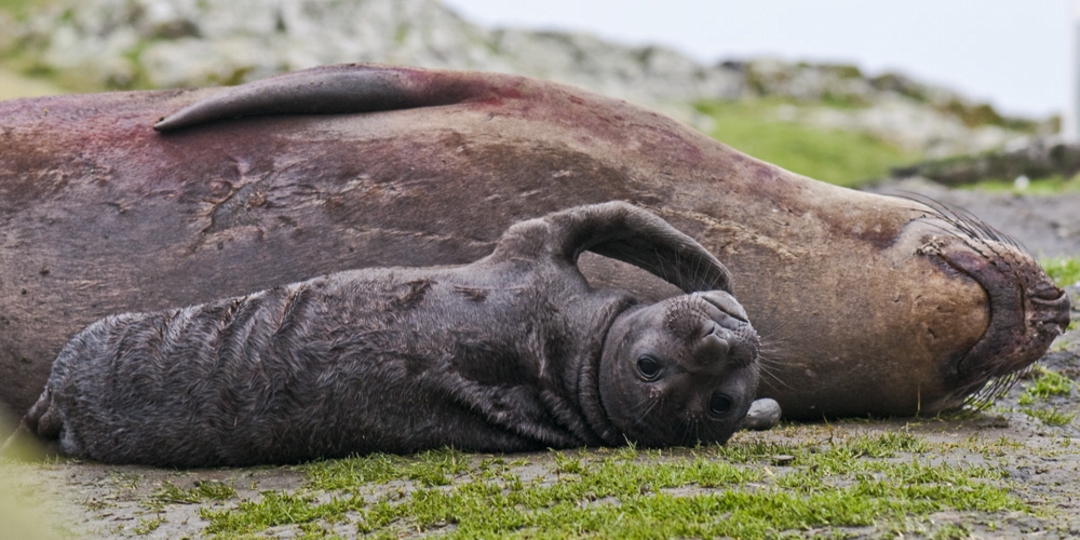 |
0758 hrs February 7, 2010: Today a new elephant seal pup was born on Great Race Rock . Follow the story below as we track what happens to this new pup. Photos by Ryan Murphy
Also see the excellent photos and video by Raisa Mirza of the pup in 2010
‘Elephant Seal’, 7, ‘I received a phone call this morning from the Chemistry teacher at Pearson College who was here overnight. He and his mother had heard “Bertha ” in the night and woke to see a new elephant seal pup and a group of eagles tearing at the afterbirth. Both Camera 1 and 3 are now located in the S window of the Science Centre, right above the action. The pup appears to be a male, and this time is the offspring of our other resident male “Misery” not “Slash”.’, ‘Ryan’, ’13:13:04 ,
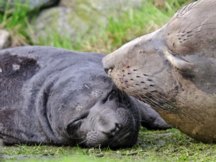 This pup appears to be a boy; the mother is Bertha (Ninene’s mother) and father is perhaps Misery (the younger of our two resident males). This would be Misery’s first offspring. |
Pam went on to say “Saw the eagle eating near Bertha and Misery ..guessed it was a placenta…..new pup seen when it became light…lying by Bertha’s head.”Pam goes on to say “I think the pup had only just been born. It certainly wasn’t there last night when I was watching Bertha. At that time she looked uncomfortable and kept shifting about. Misery incidentally has hardly lifted a flipper during all this excitement.” PB.
On Feb.13, Ryan reported in the Daily Log: ” Misery was observed mating with Bertha today around 1500hrs. Much less of a production than last year and the baby is keeping out of harm’s way.”
On camera 1 ( above two images) : Early morning Feb. 17 Pam Birley reports: “The family seem to have settled down very well and Bertha is allowing Misery to mate with her quite often. Misery seems very contented therefore right now and does not seem to be harming the pup in any way. The pup just keeps out of the way when they are mating and then goes back to feeding afterwards.
However the optimism was only for a few days.
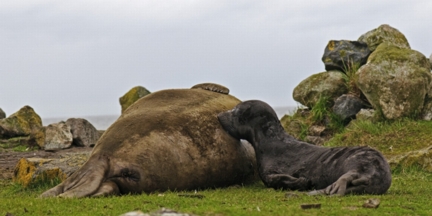 For the first two weeks the pup had done well, nursing almost constantly and gaining weight in preparation for weaning at 5 or 6 weeks.. and then. tragedy strikes.. |
 By February 17.Ryan sent this image: “The pup has 20 or so long scratches across its back this morning. I heard a lot of noise last night and was able to see Misery go after the pup numerous times. It seems that this bad behaviour only happens at night, and the pup is quite chubby and active compared to poor Ninene last year. Still another 6 weeks to go, and who knows what Misery will do once Bertha leaves. I had noticed cuts on the pup’s chin a couple days ago, but its perfect baby coat is now marred. Ryan reported in the daily log of February 17:” Last night was a rough night for our newest pup as Misery was trying to mate with it. Tooth marks on the pups chin were evident a couple days ago, but now its baby coat is marred by 20cm scratches from Misery’s sexual aggression.”
By February 17.Ryan sent this image: “The pup has 20 or so long scratches across its back this morning. I heard a lot of noise last night and was able to see Misery go after the pup numerous times. It seems that this bad behaviour only happens at night, and the pup is quite chubby and active compared to poor Ninene last year. Still another 6 weeks to go, and who knows what Misery will do once Bertha leaves. I had noticed cuts on the pup’s chin a couple days ago, but its perfect baby coat is now marred. Ryan reported in the daily log of February 17:” Last night was a rough night for our newest pup as Misery was trying to mate with it. Tooth marks on the pups chin were evident a couple days ago, but now its baby coat is marred by 20cm scratches from Misery’s sexual aggression.”
In this second week Ollie too had become the object of aggression by Misery. Eventually, after three weeks, Ollie was dead and the bite marks on the back and the loud cries heard at night suggested that Misery was to blame.
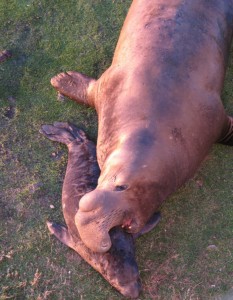
- Assistant guardian Murray took this photo from the window of the science centre from above. It shows Misery and the dead pup.
| And then in what seemed to be a repeat of last year’s behaviour patterns. In the March 2nd daily log Ryan notes that Slash was on Great Race Island, mating with Bertha and Misery had had a fight with the old male. The following pictures show the end result with the injuries sustained by Misery.(Perhaps to anthropomorphize…you might say justice is served?)
In 2011, another pup was born to Bertha. Given the past record with Misery, the outcome was inevitable. The pup lived only a week or so and then was crushed by Misery |
- March 1, 2010: Misery after the fight with Slash Murray Sager Photo
- March 1 Misery after the fight with Slash.
- March 3, Misery with cuts
- March 3 cuts close up (Ryan Murphy photos.)
NewPup on Middle Rocks
‘2010-01-31’, ‘New pup heard over the sound of the boat at 100m… “Sounds like a frog ” -Jayesh -Year 35). Recognized the squawk as the pup vocalizing. Came through the West-Middle Rock channel -that is a popular and protected spot for local boat-based diving) and spotted the pup facing the three females -Scarlet and at least one of the two adults that landed on Great Race earlier in the year) but resting alongside Slash on the N side of the middle Middle Rock -out of sight of Camera 5). Beautiful day here, very nice and dry. Adult Bald eagle landed on the roof of the Science Centre, something I haven”t observed until now… probably Pam has lots of pics over the years; definitely a different season this time last year. Most of the ~40 Black oystercatchers -that had been on the south side of Great race in two large parcels around the Energy Centre this past week) have dispersed around the this part of the Strait of Juan de Fuca. They were the earliest of the bird activity this morning, sneaking around the exposed intertidal well before dawn. Looking South from the Main Keeper ”s residence is a flat calm with scattered driftwood armadas of Mew Gulls. Prince of Whales came through on an always-pleasant late day flood from the West as well. The ever-colourful character Misery is slouched across the concrete pathway to the Science Centre. The safest route now is across the exposed bedrock from the Energy Centre to the foundation of the old satellite dish and the steps on the SE corner of the building. Geese and gulls on the island are beginning to establish strutting and flutter room, pairs of Geese are acting territorially.’, ‘Ryan’, ’09:47:25 ,
Seawater Temperature and Salinity Jan. 2010
We will be including our monthly submissions on daily seawater temperature and salinity as it is provided to IOS from the daily sampling by the Ecoguardians at Race Rocks.
See the PDF file:seawaterjan2010

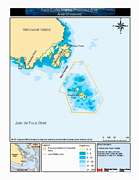 Proposed boundary areas
Proposed boundary areas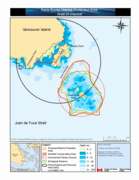 Proposed boundary areas detail
Proposed boundary areas detail